by bria4123 on October 20, 2012
Point to line to plane. This is the title of a book by the great Russian modern painter Wassily Kandinsky about how to draw. His three components are honored as basic in the Western tradition. 2,400 years ago, the Greek Euclid wrote that they’re the basis of geometry. But not all cultures would agree that this system is the basis of art and reality.
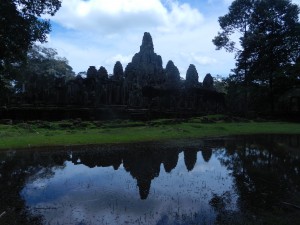
Great Cambodian temples like Angkor Wat and the Bayon (shown above) are based on a different network of ideas, and they reflect Southeast Asia’s infinitely deep environment. [click to continue…]
by bria4123 on October 20, 2012
Snakes fascinate people in cultures all over the world. But Southeast Asia’s rich natural landscape allowed an unusual number of ways that this potent symbol could become meaningful.
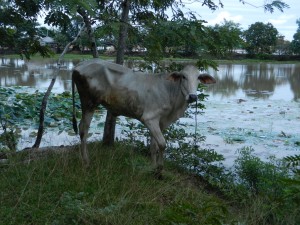
The abundant life forms in Southeast Asia often seem to flow together, and this landscape matches ideas of snakes as embodiments of nature’s prime energy. Let’s get primitive and explore this fecund convergence of nature and culture. [click to continue…]
by bria4123 on October 19, 2012
I said that I don’t have any bizarre animal fetishes. So why write about snakes?
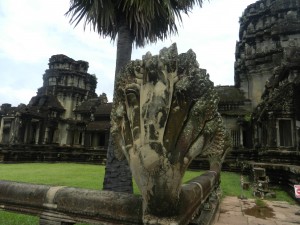
They’re hard not to notice in Southeast Asia. Nagas (snakes from Indian mythology) are all over Angkor Wat, and other temples in Cambodia, Thailand and Laos. They have a lot of meanings which can take you into some of the depths of Southeast Asian thought. Explore, if you dare. [click to continue…]
by bria4123 on October 18, 2012
How did the gods at the beginning of creation get out of their fix and allow the magnificent universe to be created?
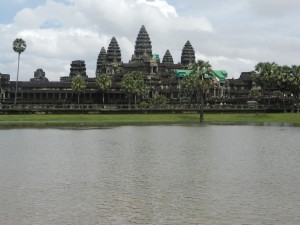
They were churning the cosmic ocean of milk with a giant snake which was wrapped around a mountain. But the mountain began to sink. From that mess to the glories of Angkor Wat–how did it happen? [click to continue…]
by bria4123 on October 18, 2012
Angkor Wat’s southeastern wall has an image sculpted in its stone that’s one of Khmer art’s most famous art works. It’s 150 feet long–the Khmers made it to awe.
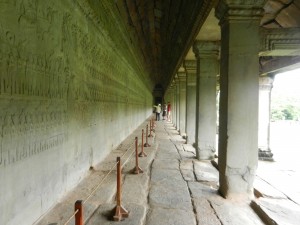
The frieze is of the central episode of a creation myth from India. A huge theme made even huger by the formal corridor that people walk through as they view it. The builders of Angkor Wat saw this myth as key in their universe, and they wanted Angkor Wat’s visitors to as well. [click to continue…]
by bria4123 on October 17, 2012
Yes, Dao also means way. And Jesus, in John, said, “I am the light and the way.” But Chinese and Western cultures have often interpreted salvation differently.
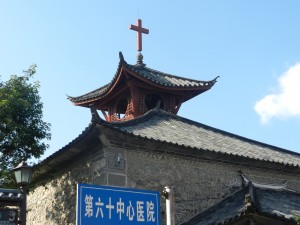
This church that I saw in Dali, Yunnan blends Chinese and Western art forms. The growth of Christianity in China is a fascinating cultural crossroads. [click to continue…]
by bria4123 on October 17, 2012
Is yet another “dude with guitar in China” shot tasteless posing? Absolutely not. I learned to carry a guitar at all times in China because the people appreciated music deeply, and it was a great way to make friends.
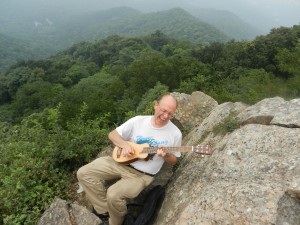
And having a jam in some of China’s most scenic places felt ambrosial, especially when people stopped to hear me. The good vibes in Nanjing created one of my most memorable “rockin with the immortals” experiences. It’s no accident that it happened in Nanjing. The city has come a long way from its past horrors.. [click to continue…]
by bria4123 on October 16, 2012
Most of us have heard of Nanjing because of the Nanjing massacre, and Iris Chang’s heroic work and tragic death.
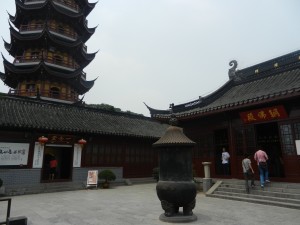
But Nanjing has a much older history, which goes back to antiquity. It had a lot of influence on Chinese culture, so it was high on my list of places to explore on this last trip. [click to continue…]
by bria4123 on October 16, 2012
One of the most monumental trends in Chinese history was the population shift from the Yellow River to the Yangtze. Back in the Han Dynasty–which was contemporary with Ancient Rome–most Chinese lived in the north. But when it broke up, folks left their ancestral homes and trekked south to the Yangtze area. But its tropical abundance bewildered many.
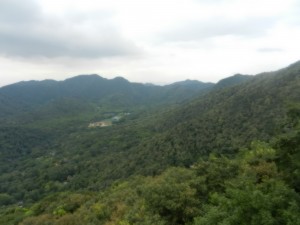
More people made the arduous journey south over the following centuries, until the Yangtze’s population exceeded the Yellow River’s. This area became China’s rice bowl. But the early immigrants had to make sense of a new environment with many plants and animals that they had never seen before. What they did had a lot to do with the spreading and endurance of Chinese culture. [click to continue…]
by bria4123 on October 16, 2012
Unlike strict monotheistic faiths like Christianity and Islam, traditional Chinese religions have allowed many gods to rub shoulders. And with input from Confucian, Daoist and Buddhist faiths over the last 2,000 years, Chinese religious imaginations have worked overtime.
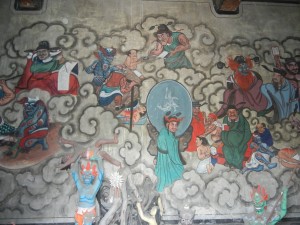
Having lived in India, I was already familiar with spiritual imaginations creating a populated heaven. But China’s city god temples reflect uniquely Chinese ideas about Heaven and Earth, and how they’re linked. [click to continue…]










